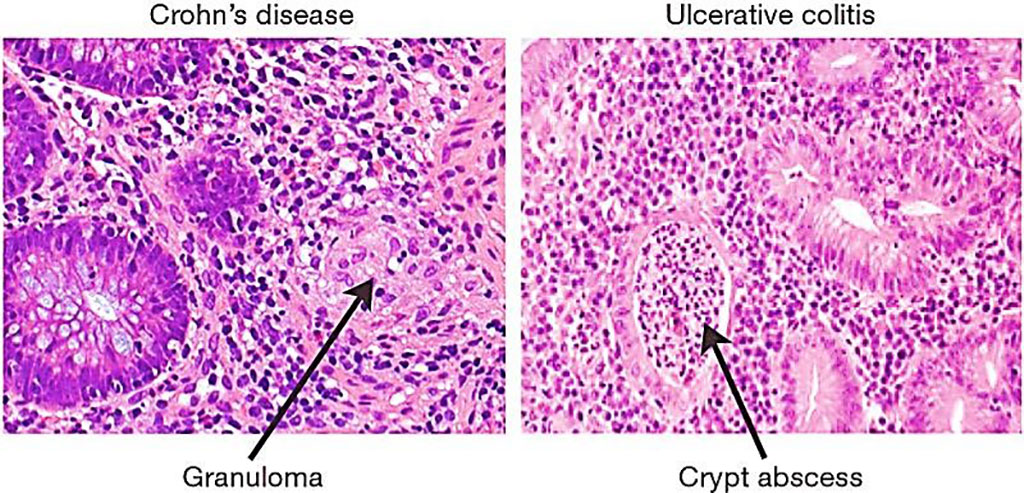New Diagnosed Anemia Linked to Crohn’s Disease Risk
By LabMedica International staff writers
Posted on 28 Sep 2020
Inflammatory bowel disease (IBD) includes Crohn’s disease (CD) and ulcerative colitis (UC). IBD is a chronic inflammatory gastrointestinal disorder that involves complex interactions among genetic, environmental, immunological, and microbiological factors.Posted on 28 Sep 2020
Anemia can be caused by a variety of etiologies such as iron deficiency, chronic diseases, vitamin B12 or folate deficiency, and genetic factors. Anemia is a known risk factor for cardiovascular diseases, dementia, and chronic medical illness, leading to an increase in all-cause mortality.

Image: Comparison of histology between ulcerative colitis and Crohn’s disease (Photo courtesy of R. J. Xavier & D. K. Podolsky).
Medical scientists from the Seoul National University College of Medicine (Seoul, South Korea) conducted a population-based study from a database for patients during 2009, during which time 9,962,064 individuals older than 20 years, who participated in the national health screening program. Anemia was defined as a hemoglobin level less than 13 g/dL in men and less than 12 g/dL in women. The investigators compared the rate of newly diagnosed IBD in anemic and non-anemic patients.
The team reported that during the mean follow-up period of 7.3 years, the incidences of CD and UC in anemic patients were 2.89 and 6.88 per 100,000 person-years, respectively. The risk of CD was significantly higher in anemic patients than in non-anemic individuals [adjusted hazard ratio (aHR), 2.084; 95% confidence interval (CI), 1.769–2.455]. The risk of CD development was inversely proportional to the hemoglobin concentration. A J-curve relationship was observed between age and the risk of CD in anemic patients. The risk of CD in male anemic patients was significantly higher than that in female anemic patients (aHR, 1.432 versus 1.240, respectively). By contrast, there was no statistically significant difference in the risk of developing UC in anemic and non-anemic individuals (aHR, 0.972; 95% CI, 0.880–1.073).
The risk of CD development was correlated with the severity of anemia as determined by the hemoglobin level. When patients were stratified with respect to hemoglobin levels, the risk of CD was 3.3 times higher in the lowest 10% group than in the highest 10% group. Jong Pil Im, MD, PhD, a professor of Internal Medicine and a senior author of the study, said, “To the best of our knowledge, this is the first epidemiological study to demonstrate the association between anemia and the development of inflammatory bowel disease in the general population.”
The authors concluded that patients with anemia, especially newly developed anemia, were associated with an increased risk of developing CD, not UC. The risk of developing CD was inversely proportional to the hemoglobin level, which was a marker for anemia severity. A J-curve relationship was observed between age and the risk of developing CD among anemic patients, similar to that observed for the incidence of CD based on age. The study was published on September 8, 2020 in the journal PLOS ONE.
Related Links:
Seoul National University College of Medicine













